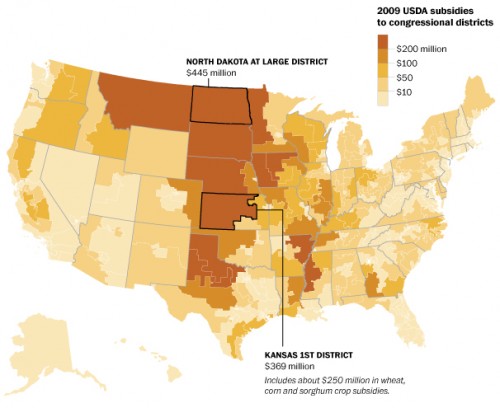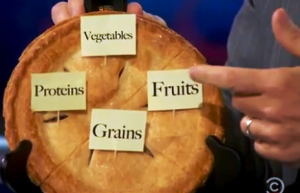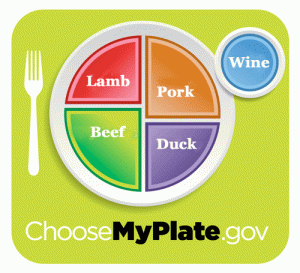I’ve had lots of questions from readers about aspects of the devastating E. coli outbreak in Germany and thought it might be useful to round them up and tackle them all at once.
Does anyone understand why this toxic strain of E. coli seems most deadly in women?
It is not clear that these bacteria are more virulent in women than in men. What seems to be happening is that women are more likely to have eaten salads. Epidemiologists say that if women are more affected than men in an outbreak, the culprit is likely to be something in salad. If men are more affected, the source is likely to be meat.
Is it possible it’s from run off from a factory farm, as with the 2006 spinach E. coli outbreak?
That outbreak was traced to a farm in California, but the outbreak E. coli strain was never found on that farm. It was found at a cattle crossing a mile away. Did the bacteria get to the spinach through a change in the water table (or runoff), through the droppings of wild boar, or through farm workers? Nobody really knows but the favorite theory seems to be wild boar (I have my doubts, as I discuss in my book Safe Food: The Politics of Food Safety, 2010).
My question again is can the contaminants be rendered ineffective through high heat cooking, as in stir fry?
Definitely. Heat kills bacteria, and quickly. If you are worried about spinach or any other vegetable, drop it in rapidly boiling water for a minute or less.
What is the best way to protect yourself from foodborne illness, especially from fresh produce?
The only way to be 100% sure is to cook food and eat it piping hot. Short of that: wash your veggies! Always. In tap water. Tap water is chlorinated and will kill most pathogens. But—and it is a big but—these toxic forms of E. coli are capable of making sticky biofilms that cannot easily be washed off. Cooking is the only way to be absolutely certain.
What is your feeling about irradiation?
I also discuss irradiation in my book, Safe Food. Lots of people love the idea because it’s an effective kill step. It is a little rough on lettuce and other leafy greens, however. Most of all, it’s what I call a late-stage techno-fix. It fixes the problem after the damage has been done and assumes that no system can be put in place to produce food safely. But food can be produced safely, and should be. I love quoting Carol Tucker Foreman on the topic of irradiation: “sterilized poop is still poop.”
Couldn’t it still be sprouts?
It sure could. As I discussed a couple of days ago, sprouts are always suspicious because they have been responsible for so many other outbreaks. But they did not turn up as an item in the epidemiologic investigations, when tomatoes, lettuce, and cucumbers did.
Will they ever find the real source?
Only if they are lucky. It’s now late in the game, although new cases are still reporting in.
Did the Germans botch the investigations?
I can’t tell from here. Some Americans think they did, and badly, and the Spanish are furious about the destruction of their produce industry. But I think it’s too soon to judge. These investigations are difficult at best and the German health care system is, by all reports, highly decentralized. I want to withhold judgment until more facts are available.
Does Germany have adequate food safety laws? And, do they enforce them?
I don’t know the specific answer to this. In general, food safety laws in Europe are more comprehensive than ours. They have single food safety agencies and farm-to-table rules that we are only just beginning to have. But the countries are smaller and can do rules like those much easier than we can. And they have experienced fewer serious outbreaks. That may be why their reporting systems are not as advanced as ours.
How will the German outbreak affect food safety in America?
It’s hard to say at this point. Congress seems determined to weaken federal regulatory agencies and cut them off at the knees. To me, this seems like a dangerous strategy. I think we need much stronger food safety regulation. The safety incidents in the last few years provide plenty of evidence that some companies cannot be trusted to produce food safely on their own and that the industry is incapable of policing itself.
That’s where government has to step in. Congress gave the FDA the authority to require all food producers to produce food following standard safety procedures. The companies ought to be doing that anyway.
I’m having a hard time figuring out what’s going on with the German outbreak. How do I find out what’s really going on?
I don’t read German well enough to follow the German press accounts, so I rely on secondary sources.
The Robert Koch Institute, the German equivalent of our CDC, publishes updates translated into English.
Food Safety News has daily updates on many aspects of this outbreak. It sent a reporter to Germany to cover the events.
Bill Marler also does daily updates on his blog.
Jim Prevor, the Perishable Pundit, has just posted a lengthy discussion of the outbreak from the point of view of the U.S. produce industry.
And for the science, Foodborne Pathogens & Disease.
 Presidents have been trying to get rid of subsidies for decades, but they also want to be reelected. Will Obama succeed where others have failed? We shall soon see.
Presidents have been trying to get rid of subsidies for decades, but they also want to be reelected. Will Obama succeed where others have failed? We shall soon see.



